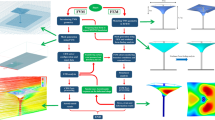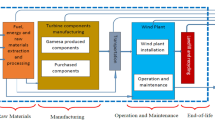Abstract
The wind energy market requires reliable wind turbines with a long and efficient working life, able to generate energy without interruption, at the lowest investment and operating cost. The current material systems used for making wind turbine blades are in majority based on glass fibres and epoxy resins. These thermoset polymer composites with synthetic fibres have proved to be technologically mature and easy to work with during the manufacturing steps, with highly fluid resin that adheres well to the composites reinforcement fibres. However, glass fibre reinforced plastics show shortcomings, such as relatively high fibre density (approximately 40–50% higher than natural fibres), difficulty to be machined and limited recycling options, not to mention the potential health hazards posed by glass fibre particulates. Among its objectives, the SoftWind project should evaluate new green composite solutions that will lead to the design of recyclable and repairable blades with higher mechanical strength and lower weight than blades made of standard materials. Initially, to familiarise with natural fibres, specimens made of hemp fibres embedded in a vinylester matrix were tested in tension, flexure and impact, and compared with traditional glass fibres with different resins to validate their performance characteristics. Hemp fibres are good candidates for this use, since they offer a sufficient compatibility with technical matrices used in impact-resistant applications. This work validates on hemp/vinylester composite plates an analytical model previously introduced in the literature for synthetic composites when subjected to low-velocity/large-mass impacts. The validation is performed by comparison between the derived analytical load curves and the experimental ones. Moreover, in view of the final scope of modelling the behaviour of a full-scale blade under workloads, the obtained mechanical properties are also used to reproduce numerically, through a finite element code, the damage mechanisms of such bio-based composites.








Similar content being viewed by others
References
Abrate S (2005) Impact on composite structures. Cambridge University Press, Cambridge
Dogan F, Hadavinia H, Donchev T, Bhonge PS (2012) Delamination of impacted composite structures by cohesive zone interface elements and tiebreak contact. Cent Eur J Eng 2(4):612–626. https://doi.org/10.2478/s13531-012-0018-0
EWEA Business Intelligence (2015) Aiming-high—rewarding ambition in wind energy. https://www.ewea.org/fileadmin/files/library/publications/reports/EWEA-Aiming-High.pdf [Contributing author and Editor: Pineda I (The European Wind Energy Association, EWEA)]
Faruk O, Bledzki AK, Fink HP, Sain M (2012) Biocomposites reinforced with natural fibers: 20002010. Prog Polym Sci 37(11):1552–1596. https://doi.org/10.1016/j.progpolymsci.2012.04.003
Fuqua MA, Huo S, Ulven CA (2012) Natural fiber reinforced composites. Polym Rev 52(3):259–320. https://doi.org/10.1080/15583724.2012.705409
Gopinath A, Kumar MS, Elayaperumal A (2014) Experimental investigations on mechanical properties of jute fiber reinforced composites with polyester and epoxy resin matrices. Procedia Eng 97:2052–2063. https://doi.org/10.1016/j.proeng.2014.12.448
Jose JP, Malhotra SK, Thomas S, Joseph K, Goda K, Sreekala MS (2012) Advances in polymer composites: macro- and microcomposites—state of the art, new challenges, and opportunities. In: Polymer composites. Wiley-Blackwell, Hoboken, pp 1–16. https://doi.org/10.1002/9783527645213.ch1
Kalagi GR, Patil R, Nayak N (2018) Experimental study on mechanical properties of natural fiber reinforced polymer composite materials for wind turbine blades. Mater Today Proc 5(1, Part 3):2588–2596. https://doi.org/10.1016/j.matpr.2017.11.043
Mishnaevsky L, Branner K, Petersen HN, Beauson J, McGugan M, Srensen BF (2017) Materials for wind turbine blades: an overview. Materials 10(11):1285. https://doi.org/10.3390/ma10111285
Olsson R (2001) Analytical prediction of large mass impact damage in composite laminates. Compos Part A Appl Sci Manuf 32(9):1207–1215. https://doi.org/10.1016/S1359-835X(01)00073-2
Pickering KL, Efendy MGA, Le TM (2016) A review of recent developments in natural fibre composites and their mechanical performance. Compos Part A Appl Sci Manuf 83:98–112. https://doi.org/10.1016/j.compositesa.2015.08.038
Salvetti M, Gilioli A, Sbarufatti C, Dragan K, Chalimoniuk M, Manes A, Giglio M (2016) Analytical model to describe damage in CFRP specimen when subjected to low velocity impacts. Procedia Eng 167:2–9. https://doi.org/10.1016/j.proeng.2016.11.662
Salvetti M, Gilioli A, Sbarufatti C, Manes A, Giglio M (2018) Analytical model of the dynamic behaviour of CFRP plates subjected to low-velocity impacts. Compos Part B Eng 142:47–55. https://doi.org/10.1016/j.compositesb.2018.01.005
Samuel OD, Agbo S, Adekanye TA (2012) Assessing mechanical properties of natural fibre reinforced composites for engineering applications. J Miner Mater Charact Eng 11:780
Scarponi C, Sarasini F, Tirillò J, Lampani L, Valente T, Gaudenzi P (2016) Low-velocity impact behaviour of hemp fibre reinforced bio-based epoxy laminates. Compos Part B Eng 91:162–168. https://doi.org/10.1016/j.compositesb.2016.01.048
Shivakumar KN, Elber W, Illg W (1985) Prediction of impact force and duration due to low-velocity impact on circular composite laminates. J Appl Mech 52(3):674–680. https://doi.org/10.1115/1.3169120
Sliseris J, Yan L, Kasal B (2016) Numerical modelling of flax short fibre reinforced and flax fibre fabric reinforced polymer composites. Compos Part B Eng 89:143–154. https://doi.org/10.1016/j.compositesb.2015.11.038
Ude AU, Ariffin AK, Azhari CH (2013) An experimental investigation on the response of woven natural silk fiber/epoxy sandwich composite panels under low velocity impact. Fibers Polym 14(1):127–132. https://doi.org/10.1007/s12221-013-0127-2
Author information
Authors and Affiliations
Corresponding author
Ethics declarations
Conflict of interest
On behalf of all authors, the corresponding author states that there is no conflict of interest.
Additional information
Publisher's Note
Springer Nature remains neutral with regard to jurisdictional claims in published maps and institutional affiliations.
Rights and permissions
About this article
Cite this article
Boria, S., Santulli, C., Raponi, E. et al. Evaluation of a new green composite solution for wind turbine blades. Multiscale and Multidiscip. Model. Exp. and Des. 2, 141–150 (2019). https://doi.org/10.1007/s41939-019-00043-4
Received:
Accepted:
Published:
Issue Date:
DOI: https://doi.org/10.1007/s41939-019-00043-4




